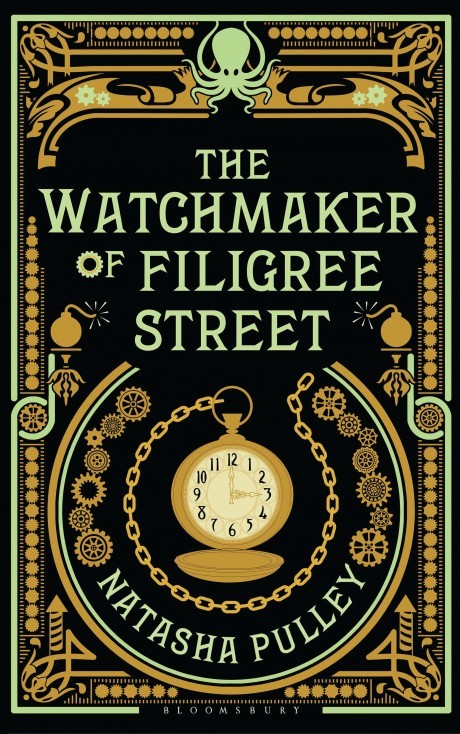Hardback by Bloomsbury Circus, priced £12.99 (ebook £7.47)
Opening the frankly gorgeous cover of this debut by Natasha Pulley – a steampunk-inspired green and gold design of cogs and clockwork – I had high hopes for the Victorian-era novel. And I was not disappointed.
The fictitious plot is rooted in history: specifically, an Irish nationalist bomb attack on Scotland Yard in 1884.
Home Office telegraphist Thaniel Steepleton narrowly avoids the blast, after being alarmed by a pocket watch that mysteriously appeared in his home, and sets out to find the watchmaker to discover if he is linked to the terrorists.
Drawn out of his civil service routine to observe the Filigree Street-dwelling Keita Mori, Thaniel finds himself moving towards a future that frightens and entrances him with its possibilities – but how much can he trust the lonely Japanese immigrant?
Pulley weaves references to events in both Britain and Japan in the late 1800s, into a rather fantastical plot involving a cross-dressing woman studying “ether” at Oxford University and a quasi-sentient clockwork octopus.
This works so well that often I found myself researching locations and policies to check which were real: yes, London did have a miniature Japanese village built in Hyde Park and yes, Scotland Yard really was blown up.
The author’s time in Japan pays off with elegant, well-observed descriptions of a foreign culture, while equal rights, burgeoning scientific developments and clashes of the English class system are all touched upon. However, Pulley’s light narrative style never feels preachy or pulled down by these serious subjects.
Her small set of characters develop well from their initial sketchiness and, surprisingly, the expected stuffy speech of the Victorian era is ignored for a more modern vernacular, making it very easy to read.
Its tight plot trots along perhaps too much like clockwork, with everything tied up a little too neatly at the end, but that’s a small criticism for a first novel.

